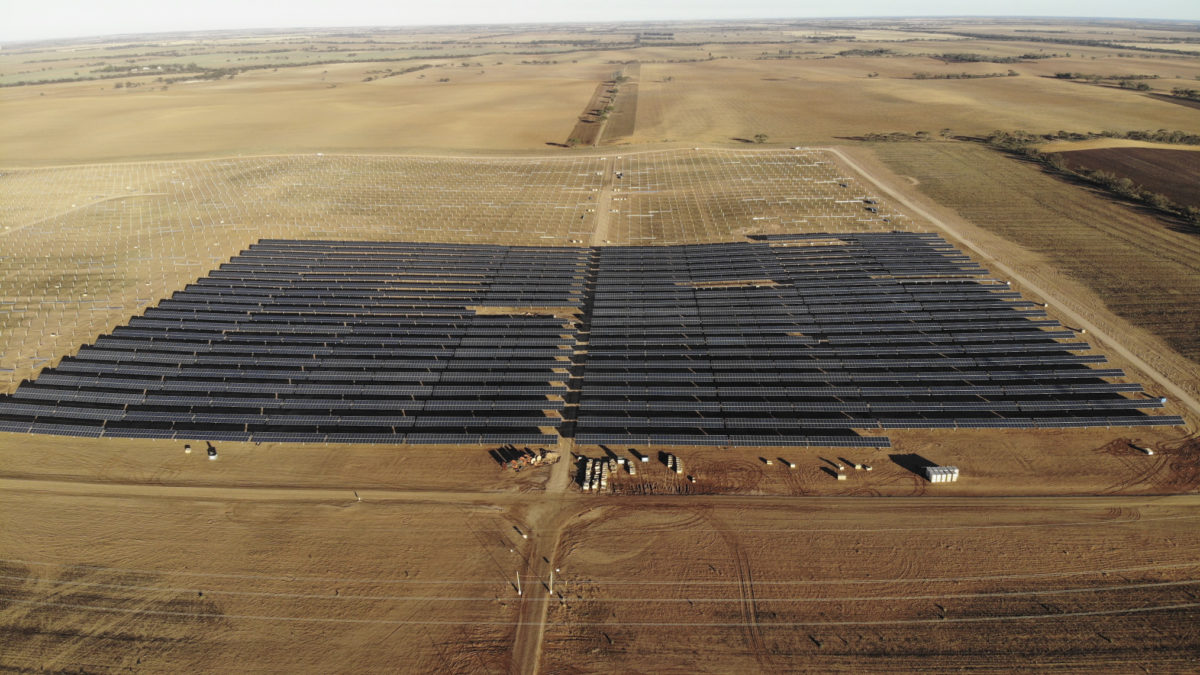Over the past couple of years, “synchronous condenser” has become a dirty word, as it has denoted a last-minute requirement for renewable energy projects seeking to connect to sections of the Australian grid that suffer from system strength issues. The big spinning machines could add unbudgeted millions of dollars to projects already in development. But strategically placed synchronous condensers, installed by network providers to enable greater penetration of renewables into the National Electricity Market, are a whole other matter.
The Australian Energy Market Operator (AEMO) gave notice last week that two synchronous condensers, installed by South Australian transmission provider ElectraNet, have been commissioned and completed. Two more syncons at Robertstown, South Australia, will be commissioned later this month.
ElectraNet determined that synchronous condensers are the lowest-cost option for addressing system strength, which is typically related to the management of minor fluctuations in supply and demand on the network. They can also be used to resolve problems related to inertia – the maintenance of stable system frequency, despite such minor fluctuations – in the presence of growing renewable energy generation in the Australian state.
That is, they replace the need to call on gas generators to manage gaps in asynchronous generation, delivering an estimated “net saving to customers equivalent to AUD 3 ($2.20) to AUD 5 a year on a typical South Australian residential electricity bill,” while also reducing fossil-fuel emissions from gas in the national account, says ElectraNet.

The implication for solar and wind farms in South Australia, which are generally restricted in their combined output to a maximum of around 1.3 GW to keep the current system in balance, is bottom-line changing. The AEMO has said that the four syncons will enable the limit on renewables – also known as asynchronous, inverter-based generation – to be raised to a maximum of 2.5 GW, which should enable the state’s existing solar and wind farms to generate at capacity.
These completed projects, along with renewable generation rippling down the pipeline – such as Iberdrola’s Port Augusta Renewable Energy Park with 107 MW of solar, partnered with 210 MW of wind – will also find greater purchase when Project Energy Connect, a AUD 2.3 billion, 800 MW capacity transmission link to New South Wales and Victoria, is completed in 2025. Their generation will also be able to access interstate demand.
Popular content
System strength-boosting syncons, batteries to super-soak up peak variable renewable generation, and judicious network upgrades are also being combined in Victoria as a more flexible alternative to massive investment in transmission and distribution networks. In May, Victorian distribution provider Powercor announced a plan to position 16 syncons, 20 batteries adjacent to substations in its network, and selected network augmentation to support the state government’s push to a 45% to 50% decrease in emissions by 2030 and net-zero emissions by 2050.
The combined effect of Powercor's investment will unlock more than 1.3 GW of large-scale renewable generation and enable greater distributed rooftop penetration, the company said. It claimed that it will also improve the reliability of the regional network by an average of 22%.
Renewable triumph
The promise of the Robertstown and Davenport syncons to enable more renewable generation to feed into the grid will be realized in stages, said the AEMO. The first stage of plant commissioning and testing is currently underway.
In the second stage, the AEMO will monitor the syncons’ interaction with the grid. At two weeks of smooth operations, it will progressively lift constraints currently binding asynchronous generators in South Australia. The third stage will involve an extended monitoring period from six to 12 weeks after the first stage, during which time AEMO will seek to transition the state system to running “a minimum” of two synchronous, gas-fired generators.
Although the renewables industry and investors might be excited about the unleashing of previously curtailed renewable energy capacity, the AEMO has warned that during monitoring, if it is “not satisfied with the performance of the synchronous condensers,” it might “extend this monitoring period and [continue to] limit asynchronous generation” in South Australia.
The research and modeling of the effects of the syncons are expected to be borne out, however. This will allow old-tech synchronous condensers to take a respected, if not “heroic” place in the energy-transition landscape.
This content is protected by copyright and may not be reused. If you want to cooperate with us and would like to reuse some of our content, please contact: editors@pv-magazine.com.



By submitting this form you agree to pv magazine using your data for the purposes of publishing your comment.
Your personal data will only be disclosed or otherwise transmitted to third parties for the purposes of spam filtering or if this is necessary for technical maintenance of the website. Any other transfer to third parties will not take place unless this is justified on the basis of applicable data protection regulations or if pv magazine is legally obliged to do so.
You may revoke this consent at any time with effect for the future, in which case your personal data will be deleted immediately. Otherwise, your data will be deleted if pv magazine has processed your request or the purpose of data storage is fulfilled.
Further information on data privacy can be found in our Data Protection Policy.